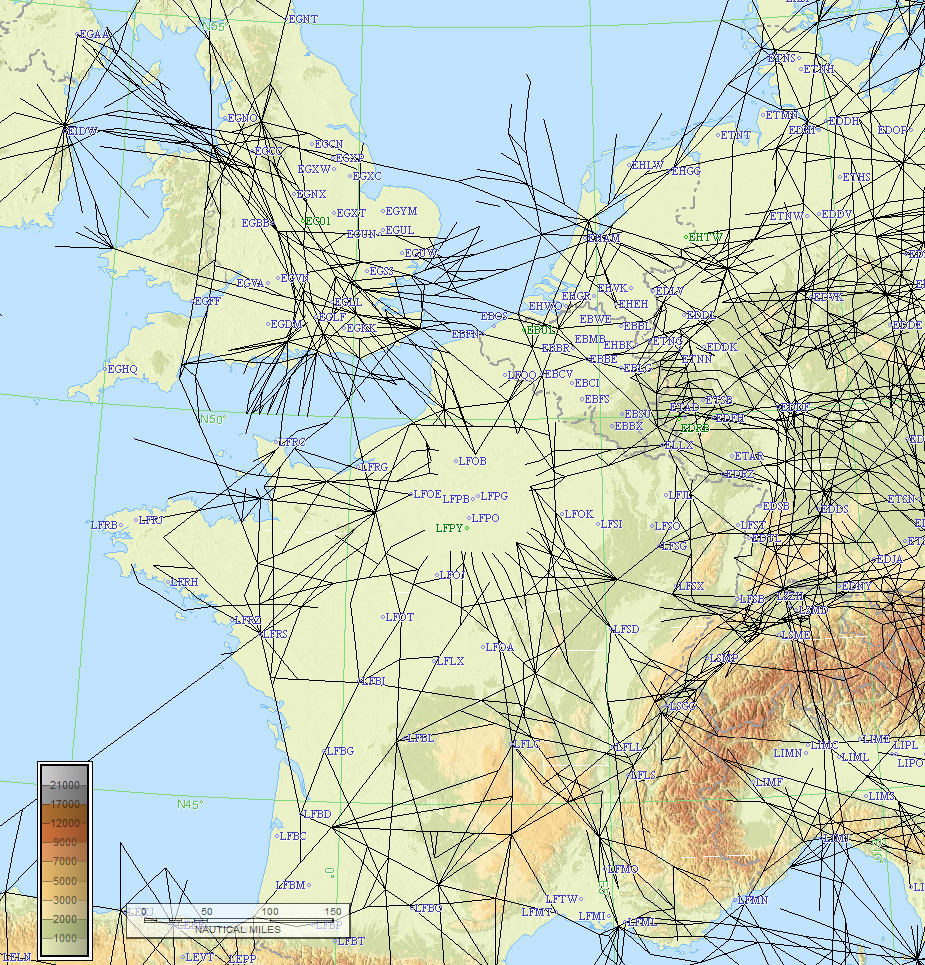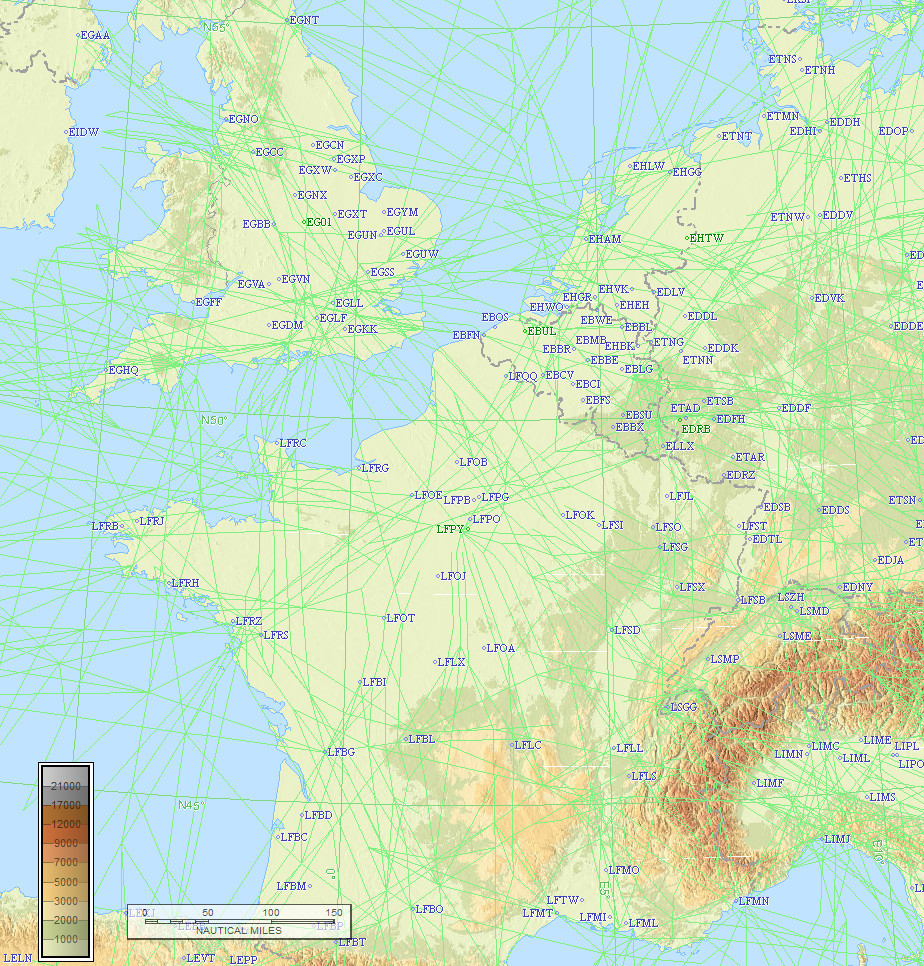That will work if the departure airport is open, and you are in a position to depart 
Take this example:
I bought a slot for EDNY for 1230, calculated with a 0900 departure and a 3.5hr flight, which is reasonable. The airport opens at 0900. On the day (some weeks later) the router calculates the EET at 3:50. Now I cannot go because an ETA of 1250 will make EDNY tower chuck the flight plan out. This year it will just be a fine, they indicate, which, yeah, is a lot better 
Peter wrote:
Yes; fixing-up the ETA to match an airport slot is the only use I can think of, but is at times very relevant where this is strictly enforced (Aero Friedrichshafen, and possibly in the case of the Greek Fraport stuff).
Maybe I am old fashioned but I tend to move my departure time to hit a slot rather than my EET.
Yes; fixing-up the ETA to match an airport slot is the only use I can think of, but is at times very relevant where this is strictly enforced (Aero Friedrichshafen, and possibly in the case of the Greek Fraport stuff).
Peter wrote:
The Autorouter aircraft model fixes your EET from the perf model and you cannot edit the EET (or your TAS, etc) at all. You have to file the FP with whatever it generates.
Well, you are making the performance model for your aircraft so in a sense you have determined how the TAS and EET are computed. You can have several performance models for different situations. Why would you want to change the EET? (Except to cheat on the slot times.  )
)
EuroFPL doesn’t do autorouting or flight planning, and never did. It merely offers previous routes and most of them are old and no longer work for various reasons.
The only other free autorouting tool was FlightPlanPro but that no longer works for large parts of Europe, due to not having had airway database updates since c. 2015.
There is also the horrible ASA routefinder which I used in 2005-2008, until Autoplan came along (that one finished in 2010). But maybe they have improved it… The guy who runs it is still maintaining it.
We also have the backup for autorouter thread which lists some other options.
eddsPeter wrote:
Now I‘m confused. Using the autorouter engine in GP with the performance data of the POH and flying the numbers, I nearly always arrive at the destination in a time slot around 5 minutes plus/minus to the ETA.
Me too. Except that I have adjusted the AFM performance figures to match my real TAS at various altitudes, and the flight profile I normally fly rather than the max performance climb numbers provided by the AFM. Although I initially felt somewhat constrained by what I perceived as the rigidity of the Autorouter performance model, I now find it absolutely fantastic in all respects. I particularly appreciate the route engine and the flight briefing.
That said, I find this line-up interesting because the only other flight planning tool I have used in Europe it the free version of EuroFPL
Now I‘m confused. Using the autorouter engine in GP with the performance data of the POH and flying the numbers, I nearly always arrive at the destination in a time slot around 5 minutes plus/minus to the ETA. The differnce is that close to the target, because the shortcuts on the routing are normally flattend by a vectored ILS approach or by the SID and the STAR which are often not the ones used in real flights. SIDs and STARs are calculated by the AR or GP regarding the shortest way. So i.e. at EDDS AR and GP often make use of the STG departure which are fine for Brussels validation, but are only allowed for local IFR trainings flights. So you will recieve a routing change on departure.
Anyway as far as I could remember, the planed routing should be as close to the routing you intend to fly, because in case of communication failure in IMC this routing should be used to get save and coordinared back to the ground. At one point after radio failure ATC will expect, that you do fly on the filed routing and will arrive as close as possible to the estimated time at the IAF.
You are right that if you never fly your route the ETA and fuel burn are not likely to matter but equally there are a lot of situations like like you mention with slots where you do want the best possible estimate. Equally fuel burn. The accuracy of something like the AR and FF atmospheric and aircraft models is quite remarkable really. I am usually within 4-5% fuel burn and 5 minutes of eta.
I think the trend in controlled airspace is for more direct routings and this will mean the estimates can become more reflective of reality for more pilots.
That’s is true for the upper airways (FL200-FL450 or so) where you fly in a jet, Jason. In a piston, winds affect it a lot more and the EET can be 20-30% off. The upper airway routings are also usually pretty straight.
What can be thus useful is wind-optimised routing, although usually it is blindingly obvious how to do that manually when it is really desirable, when you look at windy.com – as shown e.g. here.
I don’t get what you mean by rigid. Eurocontrol operates performance models which are often poor so Autorouter provides its own which help get flight plans accepted is my understanding.
The Autorouter aircraft model fixes your EET from the perf model and you cannot edit the EET (or your TAS, etc) at all. You have to file the FP with whatever it generates.
Lower airways:

Upper airways:

JohnR wrote:
Peter, although I agree with you that you rarely fly the route filed it does matter in terms of route charges. I pay charges on my Aztec and this is based on the filed route not the one flown so the lowest overhead for filing is always better.
That’s a good point John. The only thing I would point out is that what matters is the GC distance between each FIR entry and exit point.
On occasion when trying to get something filed I have had to accept for example some weird intra German routings which generate a large overhead but do not actually affect the route charge.
Peter, although I agree with you that you rarely fly the route filed it does matter in terms of route charges. I pay charges on my Aztec and this is based on the filed route not the one flown so the lowest overhead for filing is always better.